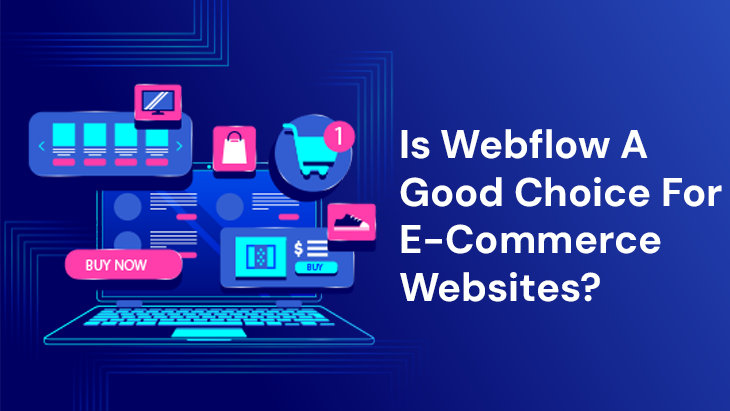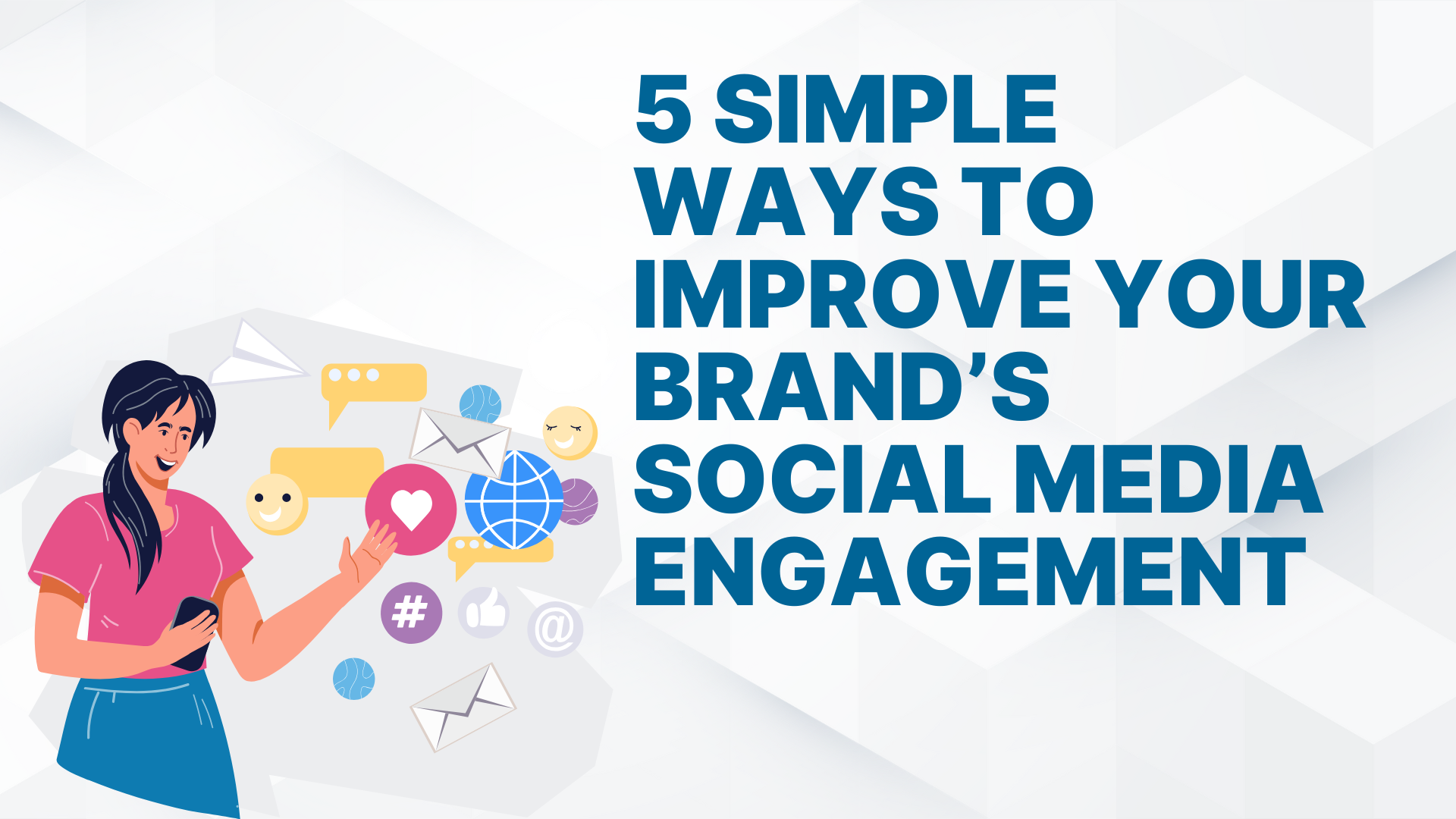With over 20 million websites worldwide, Webflow has seen explosive growth. But is Webflow a good choice for e-commerce websites?
Webflow's visual web design platform empowers businesses to create highly customized, professional-looking websites without writing a single line of code. While this tool offers robust design capabilities, it's essential to delve into its e-commerce functionality to determine its suitability for your business.
Let’s explore its potential.
Understanding Webflow
Webflow offers a powerful platform for creating visually appealing websites through its intuitive drag-and-drop interface. This enables small business owners to easily build and customize their sites without extensive technical knowledge.
Additionally, it integrates seamlessly with various marketing tools, enabling you to enhance user experience and streamline your online strategies.
What is Webflow?
Webflow is a robust website design platform that allows users to build responsive websites visually without coding. It combines a CMS, hosting, and a visual editor in one.
Developers and designers use Webflow for its flexibility, enabling them to create custom websites with animations and interactions. It simplifies the workflow by integrating design, development, and content management into one tool.
For small business owners, Webflow provides an accessible way to create a professional online presence without needing deep technical skills. Entrepreneurs can leverage this platform to launch, maintain, and scale their websites efficiently.
Key Features of Webflow
Webflow offers a comprehensive set of features aimed at creating powerful and user-friendly websites.
Here's a look at some of the standout features:
Visual Design Interface - Design and develop using a visual drag-and-drop editor, eliminating the need for coding.
Responsive Design - Ensure optimal viewing on all devices with built-in responsive design capabilities.
CMS Functionality - Easily manage and update content with Webflow’s intuitive content management system.
E-Commerce Integration - Set up, manage, and grow your online store seamlessly within Webflow.
Hosting and Security - High-performance hosting with robust security measures, including SSL certificates and backups.
SEO Tools - Built-in SEO tools to enhance visibility and improve search engine rankings.
Custom Interactions and Animations - Create enriching user experiences with customized animations and interactive elements.
E-Commerce Capabilities of Webflow
Webflow's e-commerce capabilities offer a comprehensive solution that is perfect for entrepreneurs looking to create a unique online store.
Advanced customization options enable merchants to design visually stunning storefronts, while the platform's flexible CMS allows for easy product management and categorization. Payment gateways and integrations with popular tools streamline operations, ensuring a smooth shopping experience for your customers.
Overall, Webflow provides a powerful, user-friendly environment to build, manage, and scale your e-commerce business efficiently.
Setting Up an Online Store
Building your online store with Webflow can be a streamlined and efficient process.
Here's a step-by-step guide to help you get started:
* Choose a Template: Select from Webflow's library of customizable e-commerce templates.
* Design Your Storefront: Utilize Webflow's drag-and-drop designer to create a unique, branded look.
* Add Products: Use the flexible CMS to easily add and organize your product offerings.
* Set Up Payment Gateways: Integrate popular payment options like PayPal or Stripe for secure transactions.
* Configure Shipping: Define shipping rules and methods to ensure accurate delivery logistics.
* Optimize for SEO: Leverage built-in SEO tools to enhance visibility and attract organic traffic.
* Test the User Experience: Preview your store and checkout flow to ensure a smooth customer journey.
Product Management and Inventory
Webflow provides a CMS that allows easy product management. This is particularly useful for small businesses. You can quickly add, edit, or delete products in a streamlined interface. It enhances operational efficiency.
Moreover, Webflow supports inventory tracking to ensure you never run out of stock. This reduces potential issues from overselling. The platform also offers options for bulk importing products, allowing you to maintain consistent product information.
For larger businesses, Webflow Enterprise provides even more robust tools and support to handle extensive product catalogs and complex inventory needs.
Overall, managing products in Webflow is straightforward, ensuring a seamless experience for both business owners and customers.
Payment Gateways and Transactions
Webflow supports multiple payment gateways, ensuring flexibility for your e-commerce store's financial transactions.
Here's a breakdown of the available options:
1. PayPal: Well-known and widely trusted, offering secure and straightforward transactions.
2. Stripe: Integrates smoothly with Webflow, supporting various credit and debit cards.
3. Apple Pay: Provides convenience for customers using iPhones and Apple devices.
4. Google Pay: Easy integration for Android users, facilitating faster checkout.
Shipping and Fulfillment
Webflow natively supports integrations with major shipping and fulfillment services, streamlining the order shipment process. Features include automated shipping rate calculations, real-time tracking, and support for various carriers.
You can customize shipping rules to fit your business needs. By setting different shipping zones, rates, and methods, you ensure that you offer competitive options that can adapt to various geographical and logistical realities.
For businesses seeking more advanced shipping solutions, Webflow's integration capabilities allow connection with third-party fulfillment services like ShipStation and ShipBob. This flexibility helps scale operations and manage inventory more efficiently.
Benefits of Using Webflow for E-Commerce
Webflow makes creating aesthetically pleasing and highly functional e-commerce websites straightforward for business owners. Its intuitive, visual design interface allows entrepreneurs to customize their online store without needing extensive coding skills.
Furthermore, Webflow’s integrated CMS and SEO features streamline content management and improve search engine visibility.
Customization and Design Flexibility
When it comes to customization and design flexibility, Webflow stands out as a powerful platform, offering an impressive range of options that cater to various business needs.
Here's what makes Webflow exceptional:
Visual Editor: Entrepreneurs have a high degree of control over their website's design elements.
Designer Tool: Users can manipulate HTML, CSS, and JavaScript visually, creating a bespoke site without delving into code.
User-Friendly CMS: Webflow's Content Management System provides granular control over the content, which is essential for e-commerce businesses.
Unique Branding Opportunities: The level of customization allows your website to reflect your brand's identity accurately.
Enhanced User Experience: The flexibility Webflow offers ensures you can create a unique, responsive, and user-centric online store, translating directly into an enhanced user experience and potentially increased sales.
SEO and Marketing Tools
In today's digital age, an outstanding design isn’t everything. Your e-commerce site needs strong SEO and marketing tools to succeed online.
Webflow comes equipped with robust SEO capabilities that allow you to optimize your site from the ground up. The platform lets you set custom meta titles, descriptions, and image alt texts, which are essential for search engine rankings.
Additionally, Webflow offers seamless integration with Google Analytics and Facebook Pixel, enabling detailed tracking of user behavior and conversion rates. These insights offer actionable data to refine your marketing strategies.
Performance and Speed
When it comes to e-commerce, you can't afford slow load times. Webflow is designed to ensure that your site loads quickly. Performance enhancements, such as minification of CSS and JavaScript, image optimization, and built-in Content Delivery Network (CDN) support, play a significant role.
This means your website benefits from the reliability and speed of Amazon's infrastructure. This partnership allows your e-commerce platform to handle significant traffic spikes effortlessly.
Recently, Webflow introduced advanced performance features - like server-side rendering - to further boost load times and reliability. These measures can significantly decrease page load times, which is critical for reducing bounce rates and improving search engine rankings.
Successful E-Commerce Sites Built with Webflow
Can successful e-commerce businesses thrive on Webflow? Let's explore some real-world examples that highlight the potential of this versatile platform.
Here's a look at some businesses that have thrived using Webflow:
Lattice Home (2016): A modern interior design company that leveraged Webflow to transform its online store. They achieved significant growth and client engagement by focusing on sleek, minimalistic design and user experience.
Omelet: An LA-based creative agency that uses Webflow's platform to host their online shop. Their site vividly illustrates how Webflow's flexibility allows for unique, custom-built e-commerce solutions that stand out and grab customers' attention.
Lumi (2018): A packaging supply chain company that successfully transitioned its e-commerce operations to Webflow. The transition enabled them to integrate interactive elements, boosting customer satisfaction and converting more visitors into loyal customers.
These examples show that with the right approach, Webflow can indeed be a powerhouse for e-commerce success.
Conclusion
In conclusion, Webflow is a powerful tool for building e-commerce websites. Its flexible design capabilities and user-friendly interface make it accessible even for those with limited technical expertise. Its ability to integrate interactive elements, as illustrated by Lumi, further cements its potential for e-commerce.
However, like any platform, it’s essential to evaluate how Webflow aligns with your specific business needs. While it offers robust features and customization options, ensure it fits your scale, budget, and long-term growth plans. Embrace Webflow, but always be strategic in your approach.

















Post Comments